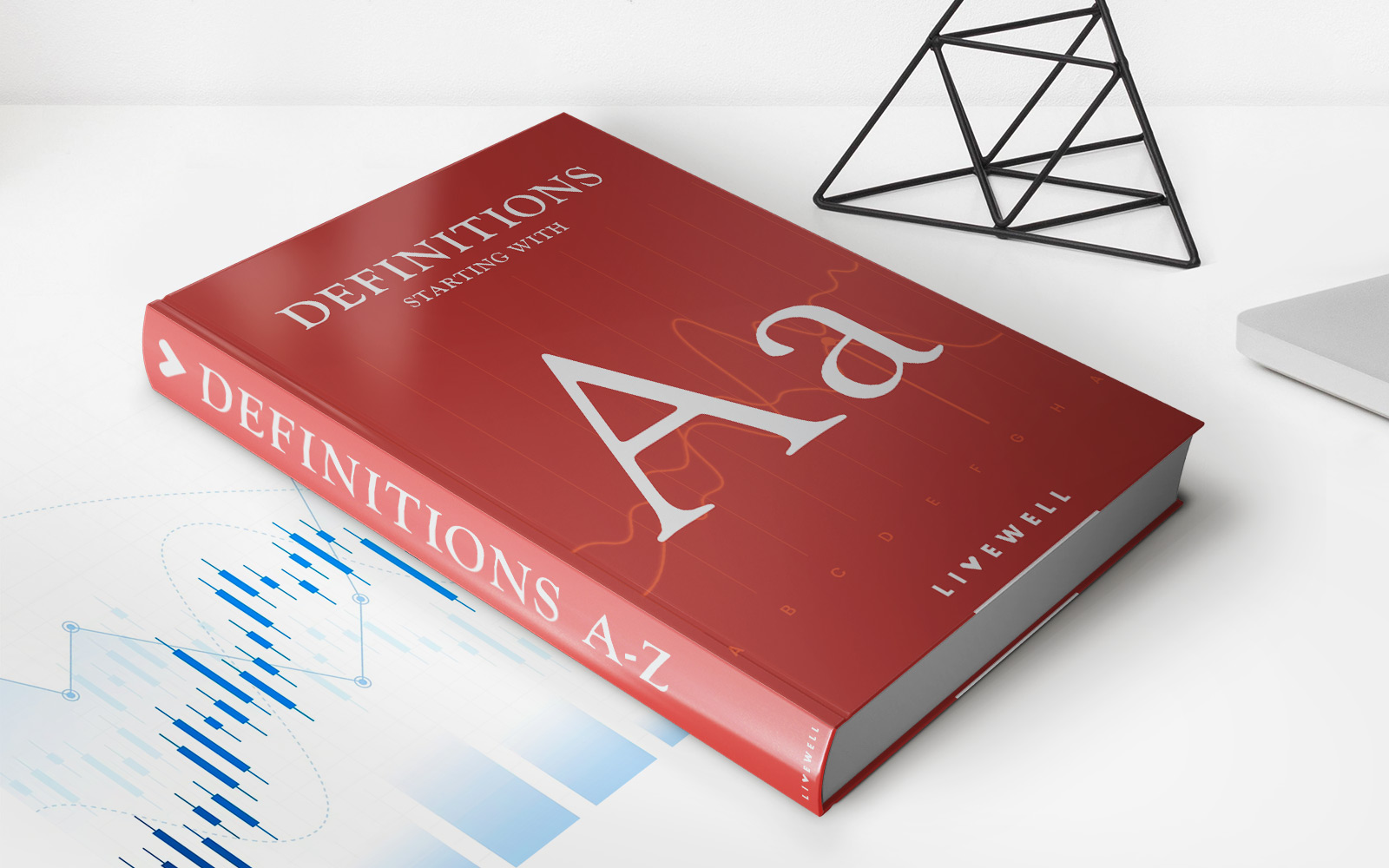

Finance
What Is A CD Account In Money Management?
Published: February 28, 2024
Learn how a CD account can help you manage your finances effectively. Understand the benefits and considerations of using a CD for your financial goals. Discover more about finance and money management.
(Many of the links in this article redirect to a specific reviewed product. Your purchase of these products through affiliate links helps to generate commission for LiveWell, at no extra cost. Learn more)
Table of Contents
Introduction
When it comes to managing your finances, it’s essential to explore various options for saving and growing your money. One such option that often garners attention is the Certificate of Deposit (CD) account. This financial tool offers a unique way to earn interest on your savings, providing a secure and low-risk avenue for growing your funds.
Understanding the intricacies of CD accounts, including their benefits and drawbacks, can empower you to make informed decisions about your financial future. Whether you’re a seasoned investor or just starting to build your nest egg, delving into the world of CD accounts can offer valuable insights into maximizing your savings potential.
In this comprehensive guide, we’ll explore the fundamentals of CD accounts, shedding light on their inner workings, benefits, drawbacks, and the process of opening one. By the end of this journey, you’ll have a deeper understanding of how CD accounts can fit into your overall money management strategy and how they can help you achieve your financial goals.
Understanding CD Accounts
Before delving into the specifics of CD accounts, it’s crucial to grasp the fundamental concept behind this financial tool. A Certificate of Deposit, commonly referred to as a CD, is a type of savings account offered by banks and credit unions. What sets CD accounts apart from traditional savings accounts is their fixed term and fixed interest rate.
When you open a CD account, you agree to deposit a specific amount of money for a predetermined period, ranging from a few months to several years. In return, the financial institution guarantees a fixed interest rate on your deposit for the duration of the CD’s term. This means that your money will grow at a predictable rate, offering a level of stability that is often sought after by conservative investors.
CD accounts are known for their low risk, making them an attractive option for individuals looking to safeguard their savings while earning a higher interest rate than what is typically offered by regular savings accounts. However, it’s important to note that accessing the funds in a CD before the end of the term may result in penalties, thereby necessitating careful consideration before committing to a specific CD account.
By understanding the core principles of CD accounts, including their fixed terms and interest rates, you can make informed decisions about how to incorporate them into your overall financial strategy. Whether you’re aiming to save for a specific goal or diversify your investment portfolio, CD accounts can serve as a valuable tool in your quest for financial security and growth.
Benefits of CD Accounts
CD accounts offer a range of benefits that make them an attractive option for individuals seeking to grow their savings while minimizing risk. Understanding these advantages can provide valuable insights into how CD accounts can complement your overall financial strategy.
- Stable and Guaranteed Returns: One of the primary benefits of CD accounts is the assurance of a fixed interest rate for the duration of the deposit. This stability allows you to predict the growth of your savings with certainty, making CD accounts an appealing option for risk-averse individuals.
- Low Risk: Unlike investment vehicles tied to the stock market, CD accounts are known for their low risk. The Federal Deposit Insurance Corporation (FDIC) insures CD accounts offered by banks, providing an additional layer of security for your deposited funds.
- Diversification of Savings: Incorporating CD accounts into your savings portfolio can offer diversification, balancing higher-risk investments with a secure, interest-bearing option. This approach can help you achieve a well-rounded and resilient financial portfolio.
- Higher Interest Rates: CD accounts often yield higher interest rates compared to standard savings accounts, allowing your money to grow at a more accelerated pace over the CD’s fixed term.
- Discourages Impulsive Spending: The fixed term of CD accounts discourages impulsive spending by imposing penalties for early withdrawal. This feature can promote disciplined saving habits and prevent hasty financial decisions.
By leveraging these benefits, individuals can harness the potential of CD accounts to fortify their financial stability and cultivate a reliable avenue for growing their savings over time.
Drawbacks of CD Accounts
While CD accounts offer several advantages, it’s important to consider their drawbacks to make well-informed decisions about integrating them into your financial strategy.
- Limited Liquidity: Unlike standard savings accounts, CD accounts restrict access to deposited funds until the end of the fixed term. Early withdrawal can result in penalties, making CD accounts less liquid compared to other savings options.
- Opportunity Cost: The fixed interest rate of CD accounts means that if market interest rates rise during the CD’s term, you may miss out on potential earnings that could have been garnered from higher-yield investments.
- Inflation Risk: In periods of high inflation, the fixed interest rates of CD accounts may not keep pace with the rising cost of living, potentially diminishing the purchasing power of your savings over time.
- Interest Rate Risk: When locking in a fixed interest rate for an extended period, there is a risk of missing out on better rates if the general interest rate environment becomes more favorable.
- Minimum Deposit Requirements: Some CD accounts may have minimum deposit requirements, which could pose a barrier to individuals with limited initial funds for investment.
By carefully evaluating these drawbacks, individuals can weigh the trade-offs associated with CD accounts and determine how to best integrate them into their broader financial planning. Understanding the limitations of CD accounts is essential for making informed decisions that align with your specific financial goals and risk tolerance.
How to Open a CD Account
Opening a CD account is a straightforward process that typically involves several key steps, empowering individuals to secure a reliable avenue for growing their savings. Understanding the process of opening a CD account can demystify this financial endeavor and pave the way for a seamless and informed experience.
- Evaluate Your Financial Goals: Before opening a CD account, assess your financial objectives and the role of a CD within your broader savings strategy. Determine the desired term length for the CD based on your short-term or long-term financial goals.
- Research Financial Institutions: Explore various banks and credit unions to compare their CD offerings, including interest rates, terms, and minimum deposit requirements. Consider factors such as the institution’s reputation, customer service, and FDIC insurance coverage.
- Select the Desired CD Type: Financial institutions offer a range of CD types, such as traditional CDs, jumbo CDs (for larger deposits), and bump-up CDs (with the option to adjust the interest rate once during the term). Choose the CD type that aligns with your savings objectives.
- Initiate the Application Process: Once you’ve chosen a financial institution and a specific CD type, initiate the application process either online, in person at a branch, or through a phone call. Provide the necessary personal information and funding details to open the CD account.
- Deposit Funds into the CD: Transfer the designated amount of funds into the newly opened CD account, ensuring that it meets the minimum deposit requirement specified by the financial institution. Verify the accuracy of the deposit and confirm the CD’s term and interest rate.
- Review and Retain Account Documentation: Upon opening the CD account, carefully review all account documentation, including the terms and conditions, interest rate details, and any penalties for early withdrawal. Retain this documentation for future reference.
By following these steps, individuals can navigate the process of opening a CD account with confidence, laying the groundwork for a secure and structured approach to growing their savings over time.
Conclusion
In conclusion, Certificate of Deposit (CD) accounts present a compelling option for individuals seeking to fortify their financial stability and nurture their savings over a fixed term. By understanding the intricacies of CD accounts, including their benefits and drawbacks, individuals can make informed decisions that align with their unique financial goals and risk tolerance.
CD accounts offer a secure and predictable avenue for earning interest on deposited funds, making them an attractive option for risk-averse savers. The stability and guaranteed returns of CD accounts, coupled with their low risk and potential for higher interest rates, position them as a valuable component of a diversified savings portfolio.
However, it’s essential to consider the limitations of CD accounts, such as restricted liquidity, potential opportunity costs, and inflation and interest rate risks. By carefully weighing these drawbacks, individuals can make strategic choices regarding the role of CD accounts in their overall financial planning.
Opening a CD account involves a systematic process that begins with evaluating financial goals, researching financial institutions, selecting the desired CD type, and completing the application and funding steps. By following these steps, individuals can embark on a structured journey toward leveraging the benefits of CD accounts to enhance their financial well-being.
Ultimately, the decision to open a CD account hinges on a thorough understanding of its features and the alignment of its benefits with your specific financial objectives. By integrating CD accounts into a comprehensive money management strategy, individuals can cultivate a resilient and growth-oriented approach to securing their financial future.
Whether you’re saving for a major purchase, building an emergency fund, or diversifying your investment portfolio, CD accounts offer a valuable tool for nurturing your savings and achieving long-term financial stability. By harnessing the potential of CD accounts in conjunction with other financial instruments, you can embark on a journey toward realizing your financial aspirations with confidence and foresight.














